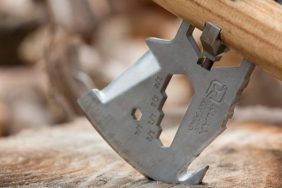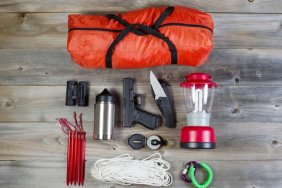 As I’ve said countless times, there’s a lot that goes into each piece of trail gear, which means shopping for new items can be overwhelming, especially for a beginner. Knowing some of the key terms and concepts relating to outdoor gear, though, will go a long way towards clearing up some confusion. Today, we’ll take another look at some gear-specific jargon by exploring some terms associated with knives.
As I’ve said countless times, there’s a lot that goes into each piece of trail gear, which means shopping for new items can be overwhelming, especially for a beginner. Knowing some of the key terms and concepts relating to outdoor gear, though, will go a long way towards clearing up some confusion. Today, we’ll take another look at some gear-specific jargon by exploring some terms associated with knives.
Fixed Blade (Sheath Knife)
A knife with a fixed blade is one that can’t be folded. These models are usually carried in a sheath. Because there are no hinges, joints, or locking mechanisms, fixed blade knives tend to be very durable, strong, and simple to use.
Some terms associated with fixed blade knives include the following:
Tang
With the blade being all one piece, the tang is the part you don’t see because it makes up the foundation of the knife’s handle.
Full Tang
Term used when the tang extends the entire length of the handle. This tends to be the strongest and most popular type of fixed blade knife.
Partial Tang
Term used when the tang extends only partway into the handle.
Handle
The grip that covers the knife’s tang, making it easier to hold. Some knives have partially hollow handles, which can be used to store smaller items like matches, fishing line, or a fire starter.
Edge
This is the sharpened surface of the blade that’s designed to do the cutting. On some knives, a portion of the edge may be serrated, enabling it to be used as a small hand saw if the situation requires it.
Spine
Opposite of the knife’s edge, the spine is usually flattened and dull.
Finger Guard
This is the raised portion of the handle or tang that’s designed to prevent your forefinger from sliding forward into the blade during use.
Choil
The curved indentation in the handle or tang that’s designed to enhance your grip.
Pommel
The butt end of the handle, farthest from the point of the knife’s blade.
Machete
Most have heard the term, but many are unaware that machetes are quite versatile. They’re designed to chop through thick brush, but their serrated edge allows them to be used as saws and their ability to efficiently chop small branches for firewood is unparalleled.








